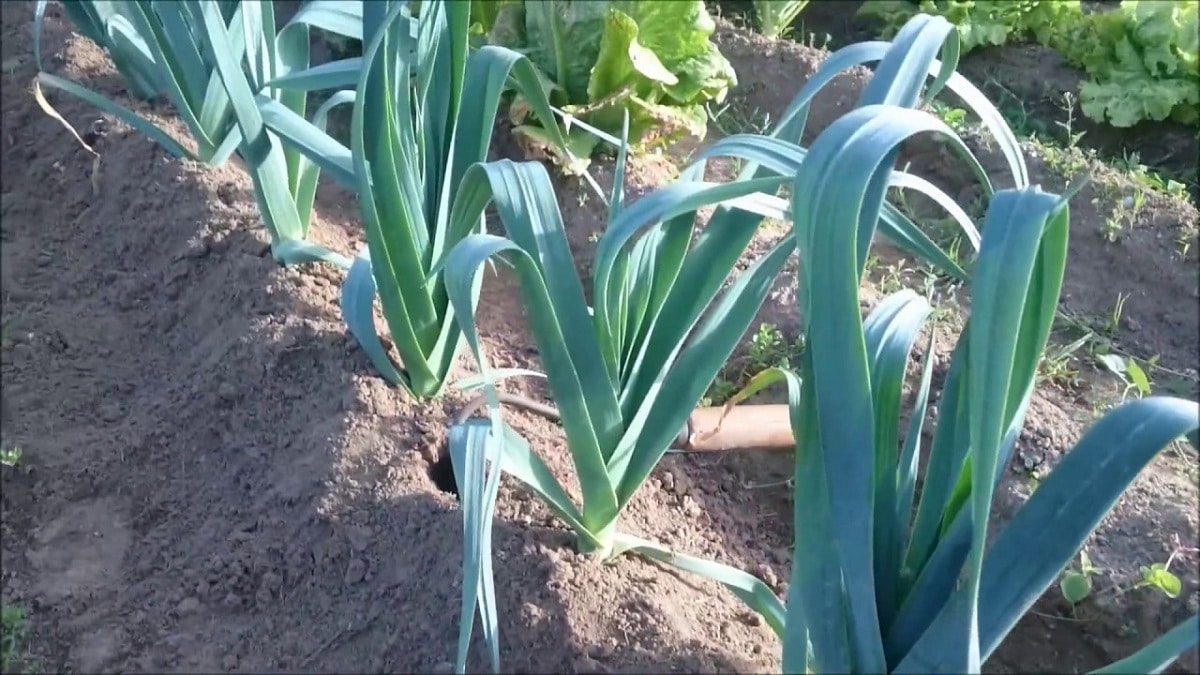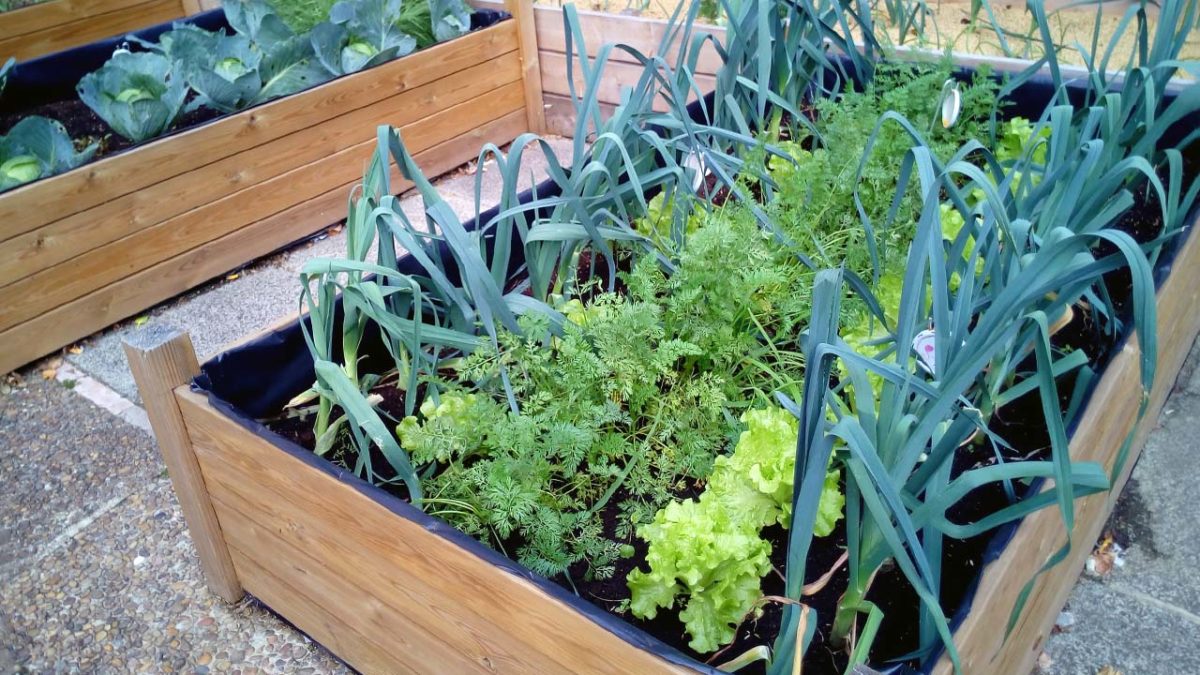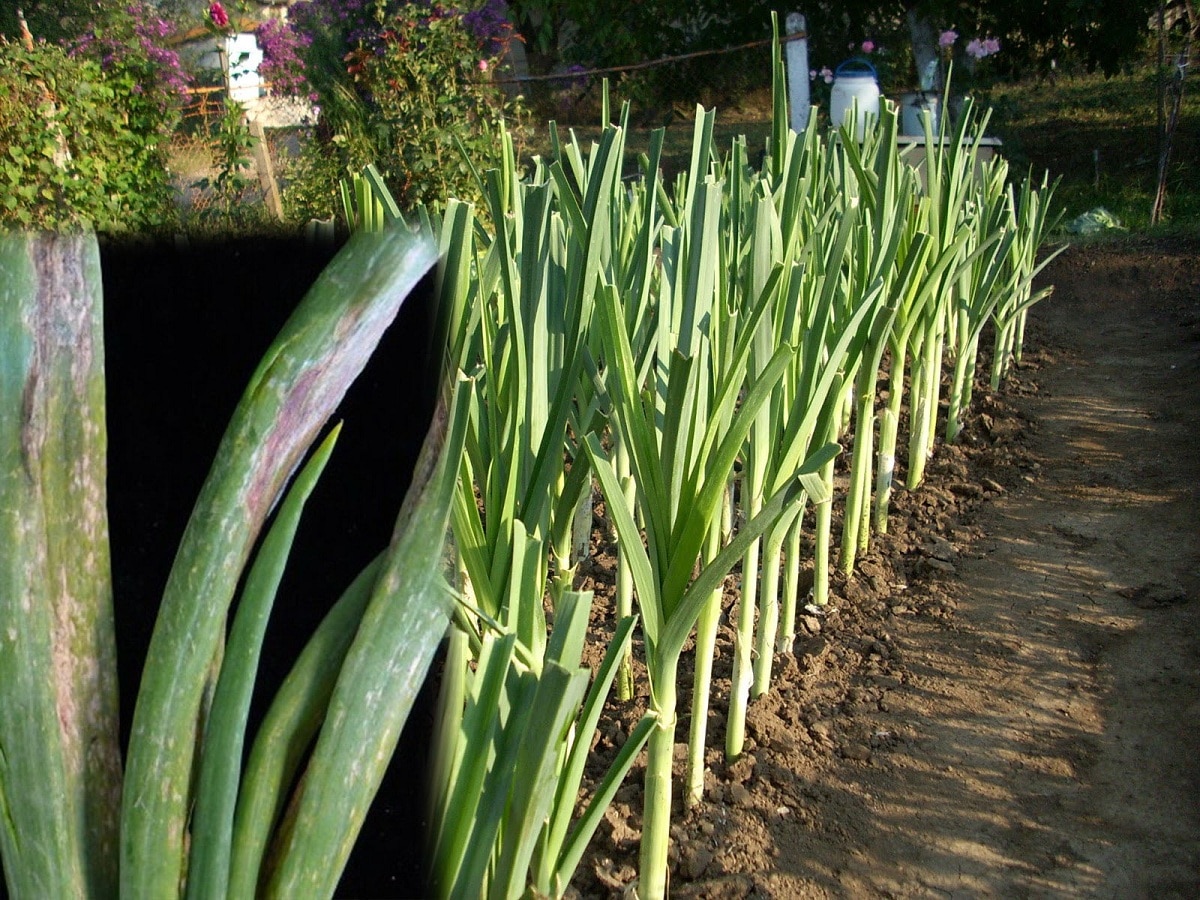
The leek is one of the plants that belong to the liliaceae family, as is the case with garlic and onion. They are easy to grow and undemanding, making them ideal to have in your urban garden. One of the advantages it provides over other crops is that it does not take up too much space and can be harvested over a long period of time. The edible part of the plant that white stem is what gives delicious flavor and aroma to soups and smoothies. However the leek culture it has some aspects to take into account.
Therefore, we are going to dedicate this article to tell you everything you need to know about the cultivation of leek and its characteristics.
Climatic requirements in the cultivation of the port

Leek can be grown in any climate, although it works best in areas with temperate and humid climates or when looking for the most suitable time of year for planting. Leeks are usually hardy, although other varieties prefer warm, humid temperatures. It needs an optimal nutrient development temperature of about 13 to 24ºC.
Leeks can adapt well to deep, cool soil rich in organic matter. It is not suitable for soils with excessive alkalinity, nor for soils with acidity, because it is a sensitive crop that supports the acidity limit of approximately pH 6. They are also not suitable for stony, poorly drained and shallow soils, such as abnormal bulb development. Definitely, the requirements of cultivating leeks in the soil are very similar to those of onion and garlic.
The propagation in the cultivation of the leek is carried out through seeds. Sowing is done in the seedbed, around 8 to 10 g / m2, and about 800 seedlings can be produced per m2, which will be buried or covered later. The seedlings remain in the seedbed for about two months until they reach a height of about 15-20 cm before they can be transplanted to the planting area.
Siembra

In-depth work must first be done to obtain loose and spongy soils; then the same excavation is carried out. The space between rows is usually 20 to 40 cm and the distance between plants is 13 to 15 cm. It is better to disinfect the seeds before sowing. Sowing dates are usually in August and September, and harvest in winter. Sowing can be done manually or by pot.
In irrigated areas, the planting density usually reaches between 300.000 and 350.000 plants / ha, while in rainfed areas, the planting density is 200.000 plants / ha. Irrigation is very important in the cultivation of leeks, because the whole crop must maintain a constant humidity. Using chemical weeds can save labor time, but the precautions involved in using these chemical treatments should be considered.
As we are going to be in a home garden, we have the great advantage that it will take up little space. This will leave us room for other plantations that may have a synergy with the leek. With the plants that best associates are carrots, tomatoes and strawberries. It is better not to mix the leek culture with other plants such as beans, lettuce, peas and radish. Regarding the rotations, as it is a plant with a long and somewhat demanding cycle, we will respect rotations of 3 or 4 years before re-sowing or transplanting them in the same place.
For the fertilizer in the village crop, nitrogen is highly required by this plant as well as potassium since the latter has a lot to do with root development and the formation of leaves.
Pests and diseases in the leek crop

Onion fly
It winters on the ground in the pupal stage. The first generation is detected in mid-March or early April. Spawning begins 15-20 days after their appearance. They lay eggs individually or in groups of about 20 eggs near the neck, in the ground or on the scales of the plant. The color of the egg is matte white. The incubation period is 2 to 7 days. The number of generations is 4 to 5 and infects flowers and green organs from April to October.
The upper part of the sheet turned white and then dies. The attack of the larvae is accompanied by the rotting of the affected part of the bulb because it favors the penetration of pathogens and irreversibly damages the bulb. It causes significant damage to the seedbed and the transplant.
The way to attack this pest is by seed disinfection or by air combat.
Trips
It is another of the main pests that can attack the leek crop. In hot, dry summer, invasions are frequent and can spread and cause significant damage. Larval and adult bites eventually yellow and dry the leaves. If it is heavily attacked, the plant may wilt, especially if it occurs in the early stages of plant development.
Onion moth
This insect is a butterfly with a wingspan of 15 mm. Its front wings are more or less dark olive-blue in color and are dotted with small ocher scales; its hind wings are gray. The larva is yellow with a brown head, 15-18 mm long. At the end of May, females lay eggs on leaves. Once the larvae fan themselves, they enter the interior, creating holes in the leaves. After about three weeks, they enter the soil, where they hibernate and metamorphose in the spring of the following year, causing damage as the caterpillars penetrate through the leaf sheaths into the shoots.
The development of the plant is paralyzed, the leaves turn yellow and the plant eventually rots because it can cause secondary fungal infections.
I hope that with this information you can learn more about leek cultivation and its characteristics.
Before transplanting, cut the roots with scissors, leaving 1cm long. Do the same with the leaves, leaving a plant 15 to 20 cm high. The plant grows more robust.
Hello Marilou.
Thanks for the info. It sure serves a reader.
Greetings.
Leeks have been tough inside for 2 years.
The popular voice tells me to water them more, to catch them before…. but result 0.
Any advice ?
Thank you
Hello Angel.
How often do you water them? When they lack water they can become hard, since the plant absorbs the water from these fruits to stay hydrated.
In any case, a regular supply of organic compost, such as guano for example, can come in handy. Once every 15 days. Thus, fruiting is likely to be better.
Greetings.